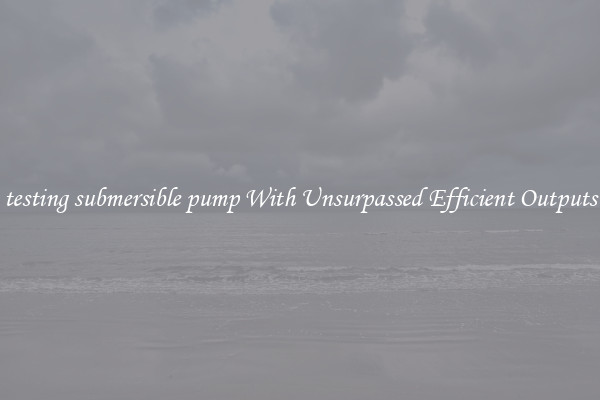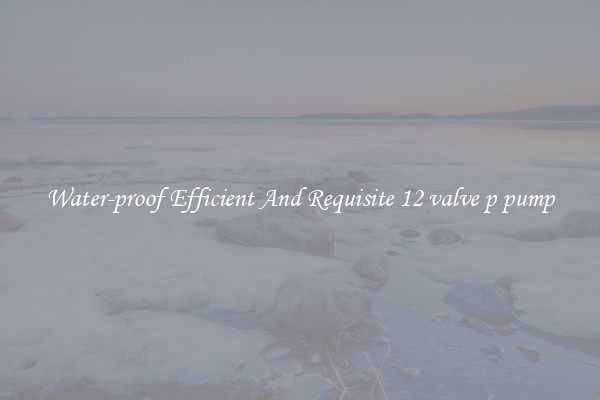testing submersible pump With Unsurpassed Efficient Outputs
Testing Submersible Pumps With Unsurpassed Efficient Outputs

Submersible pumps have become essential equipment for a wide range of applications, from industrial use to residential applications. These pumps are designed to operate underwater, making them ideal for pumping water from deep wells, sumps, and other submerged areas. However, not all submersible pumps are created equal when it comes to their efficiency and output performance. Hence, it is crucial to test submersible pumps meticulously to ensure they meet the required standards and deliver unsurpassed efficient outputs.
Testing the efficiency of submersible pumps involves several critical parameters. One of the primary factors to consider is the pump's power consumption. A reliable submersible pump should have minimal power requirements while delivering maximum output. Conducting power consumption tests under different operating conditions - such as various water depths and flow rates - helps assess the pump's efficiency. By analyzing power consumption data, engineers can identify any irregularities or energy losses within the pump system, which can then be rectified to optimize efficiency.
Output performance is another vital aspect to evaluate during submersible pump testing. The pump's output is determined by its ability to move a certain volume of water within a given time frame. Measuring the flow rate and pressure head of the pump is essential to estimate its output performance accurately. A high-efficiency submersible pump should demonstrate a consistent and reliable flow rate, maintaining its output even under varying operating conditions. This ensures that the pump can handle the intended applications effectively and continually pump water without any disruptions.
To further assess the effectiveness of a submersible pump, it is essential to examine its overall design and build quality. Submersible pumps operate in harsh environments, often immersing in corrosive or abrasive liquids. Therefore, pump materials that are resistant to corrosion, wear, and tear are crucial for long-lasting performance. Testing the pump's durability and resistance to external factors such as chemicals and physical impact helps ensure its longevity and reliability.
In addition to efficiency and output testing, submersible pumps should also be evaluated for their safety features. Waterproofing is crucial to prevent any electrical malfunctions or hazards during operation. Proper insulation and grounding testing should be conducted to ensure the pump can operate safely under submerged conditions without any risk of electrocution.
Overall, testing submersible pumps with unsurpassed efficient outputs requires comprehensive evaluations of power consumption, output performance, build quality, and safety features. By conducting rigorous testing procedures, manufacturers can guarantee the reliability and performance of their submersible pumps. This not only benefits industries relying on submersible pumps but also ensures a seamless user experience for residential applications.

View details

View details

View details

View details








